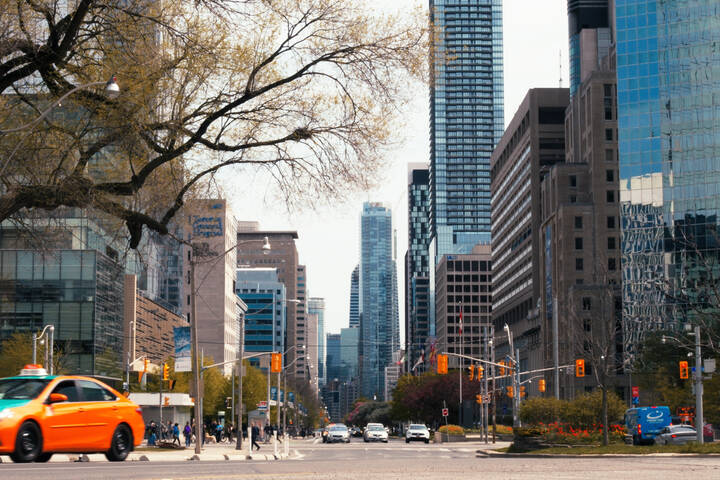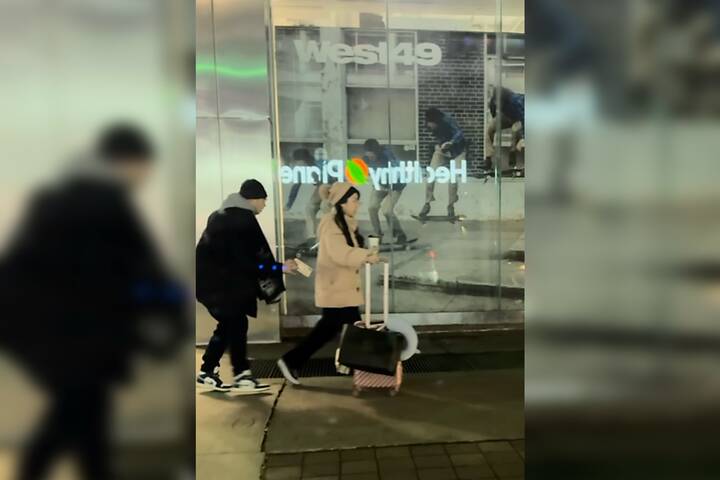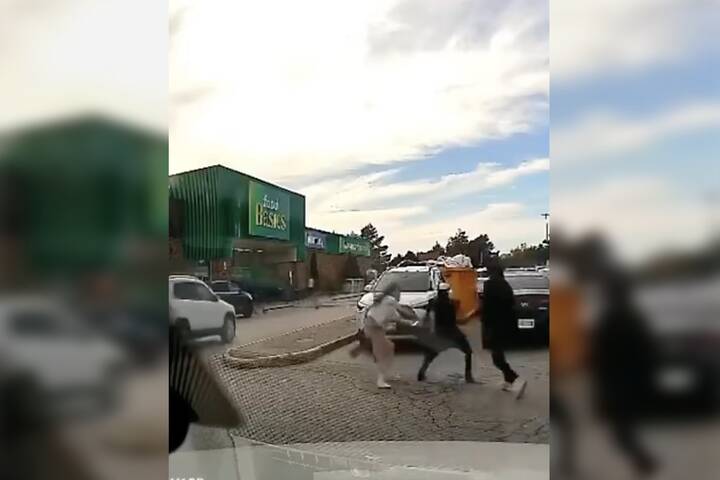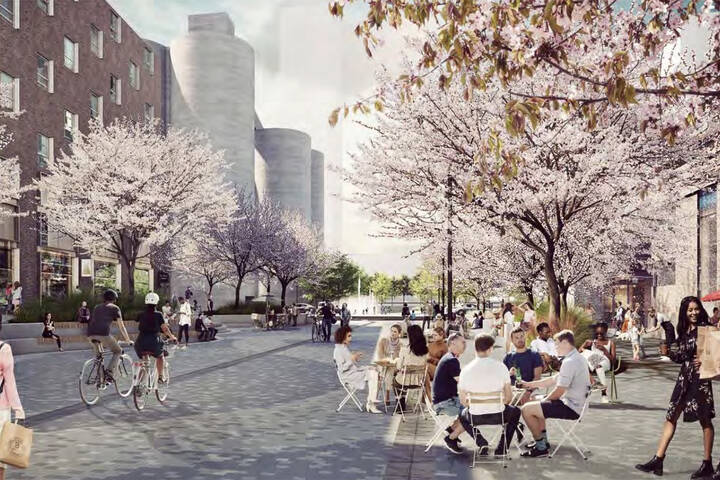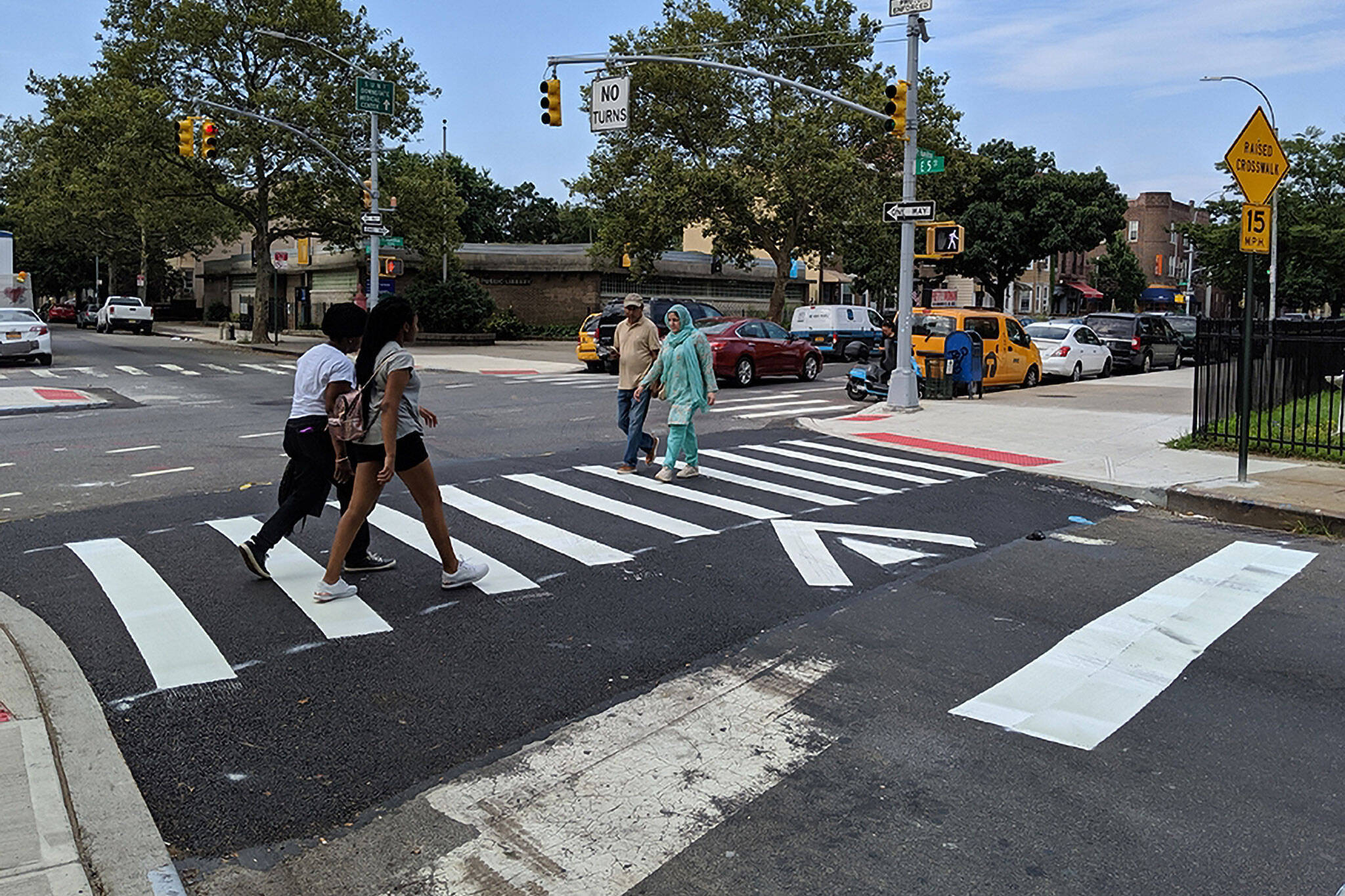
Experts say raised crosswalks could prevent many pedestrian deaths in Toronto
On Wednesday, newly-elected New York City mayor Eric Adams announced an ambitious road safety plan for that city that includes raising crosswalks at intersections — a proven way to cut down on pedestrian fatalities.
It's an idea that has road safety advocates talking some 500 kilometres to the northwest in Toronto, where 58 people were killed and 183 seriously injured on roads in 2021 alone.
Alex Mather, Vice President at Markee Developments — a firm co-partnered by former Toronto Chief Planner Jennifer Keesmaat — is one voice who supports bringing raised pedestrian crosswalks to Toronto intersections, suggesting a similar program could easily save lives on the city's treacherous roads.
Toronto could easily do this tomorrow and it would save lives. https://t.co/SmRklBrIzQ
— Alex Mather (@AlexDRMather) January 20, 2022
New York's move to target intersections with traffic control measures is backed by data, with nearly 80 per cent of that city's road-related injuries recorded as occurring at pedestrian crossings.
According to the NYC street design manual, these raised crossings are more visible to pedestrians and drivers, improve access for people with mobility issues, and compel drivers to pass through intersections as the stated speed limits.
Lots of chatter about NYC announcement today. And it’s a good step, but let’s find a higher bar to shoot for TO. Admittedly, we have a long way to go but we are already several most of this in higher numbers. https://t.co/Y7Nn4cIHHJ
— Mike Layton (@m_layton) January 20, 2022
Toronto-based urban design and architecture studio Brown + Storey has chimed in on the idea, noting that the research has already been done in other cities.
Would be totally fine with copying the dozens of cities that have figured this out.
— Alex Mather (@AlexDRMather) January 20, 2022
While he agrees that it is a promising idea, Ward 11 University-Rosedale Councillor Mike Layton argues that implementation of raised crosswalks would need to come along with provisions for stormwater drainage to avoid similar problems caused by cycling lanes in the city.
I do not disagree that this would be great. But Saying it would be easy, we need a better way to manage stormwater around curbs or you can expect what we currently see in Uni Bike lane. There must be a engineering fix that can be easily scaled? but TO hasn’t found it.
— Mike Layton (@m_layton) January 20, 2022
These could be simple fixes at some intersections, but any work involving the modification or relocation of buried infrastructure is sure to come with a steep price.
Yes. Sometimes they are easy, sometimes it requires moving underground utilities, sometimes it’s about resurfacing the entire road to change the shape.
— Mike Layton (@m_layton) January 20, 2022
At least one commenter envisioned these raised crosswalks as having clear edges that could put pedestrians at risk of tripping or falling, but in reality, they would be about 10 to 15 feet wide, gently sloping down to meet the grade of the surrounding roads.
Despite the councillor's apparent resistance, Mather tells blogTO that, based on both local and international data, "we know that many of the most impactful Vision Zero-related changes we can make to improve the safety for people walking, biking, and using mobility devices, is to make physical changes to our infrastructure."
Mather says that "this can — and should — be realized both through 'quick start' projects that focus on changes that can be made quickly and relatively inexpensively, through the use of things like plastic bollards, temporary concrete curbs, planters, and similar, and those that require more significant commitments of resources in terms of time, money, and coordination."
Looking to other cities like New York which have been more proactive in their approaches to Vision Zero goals, Mather points out programs that could close the gap here in Toronto, suggesting "a wide range of interventions, such as road narrowing, tightened curb radii, bollards, curb extensions, pedestrian refuges, and more, to name just a few."
While cities like New York take active steps to enhance pedestrian safety, Mather notes how "Toronto has chosen not to pursue these sorts of improvements at scale."
Latest Videos
Latest Videos
Join the conversation Load comments

